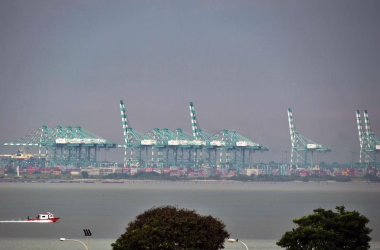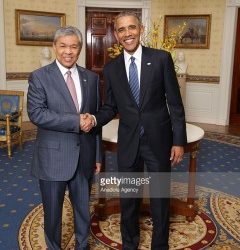The history of translating Bible into Bahasa Malaysia has started since the 16th century. It was the era when the European colonialism was rapidly developing. South East Asia became an attraction for the colonial powers for its trade and resources potential. South East Asia has also become the potential field in order to spread the Gospel for the European. The Roman Catholic churches had already sent missionaries to most of Asia.
The publication of such versions becomes easier with the rise of Protestant States. As a consequence, the Bible was translated into the language of the regions. Netherlands is one of the first countries in Protestant Europe to establish its power outside of Europe. As a result, Malay has become the first language into which Bible was translated outside of Europe and the Middle East.
Dutch East India Company (Vereenigde Oostindische Compagnie, VOC) was one of the corporations that sponsors pastors for the Dutch population, and tolerated some evangelistic efforts among Catholics although it was said that it does not encourage the missionary activities. The first initial effort to translate the Bible into other language was made by a trader and clerk of the Dutch East India Company, Albert Cornelius Ruyl and Jan Van Hasel. The first period of the translation ended with the publication of the complete New Testament translated by Rev. Daniel Brower.
The first translation of the Bible was done in Jawi script. But, there’s problem with the Jawi script; it has only three letters to represent the vowels sound. The translation of the Bible into Jawi has not been produced until the mid of 18th century. The second problem which emerged was to define the limitsboundaries of the Malay language, and to distinguish differentiate its dialects and the related languages. The last problem was “related to the problem of determining the limit of the language lay in establishing its proper idiom”.
In 1758, the complete translated Bible was published in Batavia using Jawi script. The Bible was translated by Dr. Leidekker at first, then, was continued by Francois Valentine which then died in 1727. The translation then checked by van der Vorm and a group of language expert. This translation became the standard translation for nearly two centuries in Indonesia and Malaysia.
As the colonial power of British expanded into Southeast Asia region, so does the Christianization operations by missionary societies. London Missionary Society (L.M.S) was one of the missionary organizations who became interested to send missionaries to China. In 1814, William Milne, one of the members of L.M.S came to Melaka and decided that Melaka would be the best location for the center which the L.M.S had decided to establish. This was because of Melaka was the ordinary trade routes to China.
L.M.S’ efforts to produce Malay-translated bible began with an interview between Milne and his language teacher, Munshi Abdullah (Abdullah bin Abdul Kadir). Forty years after this interview, as William Milne focused on the production of Chinese Bible, Munshi Abdullah would be the one who played a major role in translating the Bible into Malay, with the support of Claudius Thomsen, another missionary sent by L.M.S in 1815 to specifically work among the Malays. Thomsen, however, faced a difficulty in publishing the Bible despite having his own printing press in Singapore. Only the press in Melaka had the capability to print an entire gospel. Back then, it was under the control of a group of missionaries whose focus was on the Chinese literature. Therefore, Thomsen’s missionary efforts had received less support from the missionary agencies.
When Thomsen left Singapore, he sold his printing press to the American missionaries who had just arrived. One of them, John Stronach took over the work of revising the New Testament as well. Stronach also worked with Abdullah in order to revise the New Testament.
In many ways the year 1852 marks the end of era in Bible translation into Malay. The cessation of translation work did not mean the end of efforts to use and distribute Malay literature. In 1880, a full time Bible Society agent was assigned was assigned to Singapore and in 1882, it began what was regarded as the most successful way of reaching non-Christians with the scripture. At about the same time that Keasberry was printing his translation of the complete New Testament a Dutch Mennonite minister in Java was undertaking to improve on Leidekker’s translation.
In many years, the version of the Bible translation is being improved by many people and organization. This was due to some problems that occur, for example the language used was not appropriate or language cannot be understood by the natives or some of the word was not spelled correctly. During the time, there were communities that take the responsibility to revise the Bible in Malay. The members were Bishop Hose, W.H. Gomes and Shellabear. The committee consulted with Dato Dalam of Jahore for several hours each day on ‘various questions of Malay language and literature’. According to Shellabear, Dato’ Dalam was one the son of Munshi Abdullah.
Other than this, there also exist other organizations which had tried their best to improve the translation of the Bible. They worked with the natives in order to make the translated Bible being accepted and understood by the natives. Problem still exist although they tried their very best to improve the translation of the Bible. As we all can see, the definition of “idiomatic” Bahasa Malaysia continues to evolve there may be the need for further new translation.
As a conclusion, developments in the translation of the Bible revolve around these considerations; 1. The establishing of the standards of the language. 2. Establishing the appropriate ways of using the language to communicate Biblical ideas within the culture. 3. The targets and means of distribution.
References:
1) Hunt, R.A “The History of the Translation of the Bible into Bahasa Malaysia”JMBRAS Vol 52 Part 1 June 1989, pp.35-56.)
2) Executive Summary “The History of the Translation of the Bible into Malay” MBRAS, link: http://www.mbras.org.my/article2.html
This summary of Hun’ts publication was written by,
Norlia bt Salleh
IKB Researcher
Information Systems (FSKTM), UNIMAS











